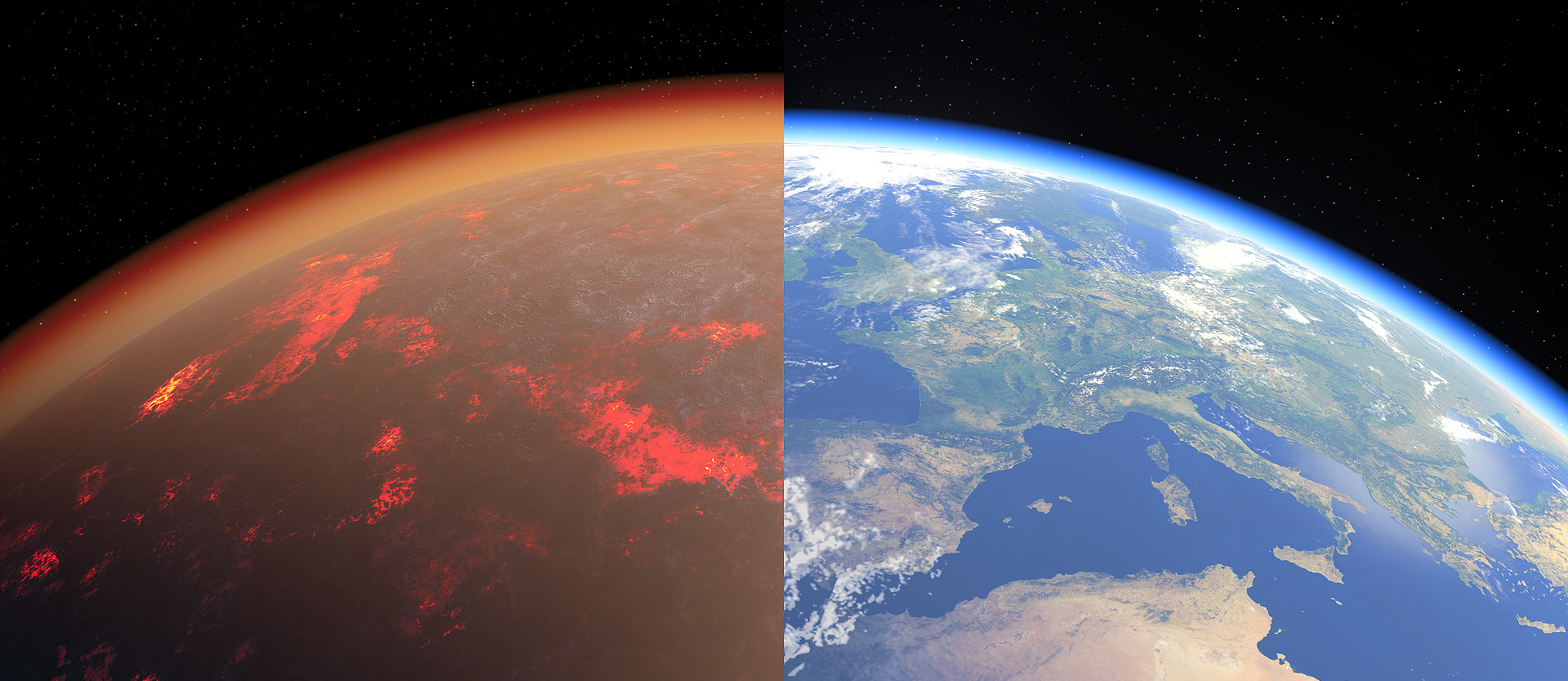
Early Earth Explored with Laser

If the world looked the way it did 4,5 billion years ago, we would hardly recognize it. Instead of forests, mountains, and oceans, the surface of our planet was covered completely with magma, the molten rock material that comes to the surface with volcanic eruptions. It is unclear, however, what the atmosphere looked like back then. New studies led by Dr Paolo Sossi from the Swiss Federal Institute of Zurich (ETH) have uncovered further secrets of Earth’s primordial atmosphere. The experiment was assisted by a laser that helped simulate the temperatures of earth.
Earth used to be an uncomfortable place. “4,5 billion years ago, rising magma continually exchanged gases with the atmosphere,” Paolo Sossi explains. “Air and magma mutually influenced each other. If you study one, you’ll also learn about the other,” say Sossi.
In order to gain better understanding of earth’s primordial atmosphere, the geoscientists created their own magma in their laboratory. They mixed a powder that resembles the composition of the molten earth’s mantle and heated it. It was a lot harder than it sounds, Sossi says. “The composition of our mantle-like powder complicated the melting process. We needed temperatures of more than 2000 °C to make it melt.
The powder was then heated in a special oven by a 125-watt CO2 laser. The researchers focused the laser-light on samples with a five millimeter diameter. Additionally, the geochemists let the magma float by letting other gas mixtures move around it. These gas mixtures are possible candidates for early earth’s atmosphere. Just as they did 4,5 billion years ago, the gases in the oven influenced the liquid magma. Depending on the mixture of the gases, the composition of the magma changed.
We were especially interested in the iron contained in the magma,” Sossi explains. When iron meets oxygen, it oxidizes and turns into what we commonly call rust,” says Rossi. If the gas mixture in the oven contained a lot of oxygen, the iron contained in the magma was oxidized more strongly. Once the samples had cooled down, the researchers analysed how much the iron had oxidized. They then compared the measured data to the peridotites. These rocks form today's earth’s mantle and still bear the impact of earth’s primordial atmosphere.
Early earth similar to Venus
“We established that after cooling down from the initial magma state, early earth contained an easily oxidizing atmosphere with carbon dioxide as the main component, as well as nitrogen and some water,” Sossi reports. The surface pressure was nearly 100 times higher and the atmosphere was reaching further into space because of earth’s hot surface. “The primordial atmosphere of earth was more similar to today’s Venus than today’s earth,” Sossi says.
Sossi and his team draw two conclusions from these findings: Earth and Venus had, in the early stages, similar atmospheres. Venus lost its water due to its closeness to the sun and the resulting higher temperatures. Earth, however, retained its water. Today, water covers most of earth’s surface. The oceans absorbed a large part of carbon dioxide from the atmosphere, considerably reducing the carbon dioxide concentration in the air.
The second conclusion is that a popular theory about the origins of life on earth is now more unlikely than before. Based on the so-called “Miller-Urey-experiment”, this theory assumes that lightnings in combination with gases such as ammonia and methanene led to the creation of amino acids, the building stone of life. Sossi, however, believes that this process would have been highly unlikely. He is convinced that the necessary gases didn’t exist in sufficient quantity.
Originalpublikation:
Paolo A. Sossi et al.:
Redox state of Earth’s magma ocean and its Venus-like early atmosphere
Science Advances 25 Nov 2020, Vol. 6, no. 48, eabd1387
DOI: 10.1126/sciadv.abd1387












